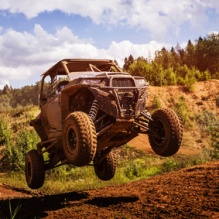All You Need to Know About your ATV’s CVT Transmission

All-Terrain Vehicles are great all-around vehicles, whether it’s for work or fun, they are great tools with a host of applications. You can easily buy one at affordable prices when you opt to go pre-owned or visit auctions offering wrecked ATVs for sale. You can also get parts to repair or restore your favorite ATV. One of the most important components of an ATV that needs to be in tip-top condition all the time is the transmission. To take a good care of your ATV’s transmission, you need to know important information about how it works. This blog helps you do just that. Lets dig in.

What does CVT mean?
CVT stands for Continuously Variable Transmission and refers to a single-speed transmission, pullet transmission, step-less transmission, or a twist and go, in the case of motorcycles. It has the ability to change in a seamless fashion through a continuous range of effective gear ratios. The belt driven system features an automatic centrifugal clutch responsible for the link between the transmission gearbox and the belt and drive/driven pulleys.
How does it work?
The CVT transmission varies ratio based on vehicle speed, engine RPM, and load. This is because there is an optimum RPM range for engines within which they produce the best power and efficiency. An automatic transmission seeks to enable the engine to operate at optimum power based on varying driving conditions. There are basically 3 main components of the system, which are:
Primary clutch
The primary clutch comprises a stationary sheave and a moveable sheave, the latter of which moves in and out to engage the belt.
Secondary clutch
The secondary clutch is attached to the input shaft of the transmission. It also features 2 sheaves, one stationary and the other movable.
Belt
The belt transfers the drive from the primary clutch to the secondary clutch. The system also features other components such as an arrangement of flyweights which act to press on the moveable sheave of the primary sheath to achieve contact with the belt. The secondary clutch features a compression spring and a torque sensing element referred to as a cam. The compression spring keeps the secondary clutch closed at low ratios. The cam has 2-3 surfaces that are in contact with rollers attached to the clutch shaft. As the driver pushes on the throttle, the primary clutch tightens the belt by closing. The actions drive the secondary clutch sheave to spread and produce a lower CVT ratio. This action results in acceleration and deceleration and other scenarios are characterized by different CVT inner workings.
Last word
AutoBidMaster is your one-stop shop for all types of deals on salvage and wrecked ATVs for sale. Talk to us today at + 1 (503) 298 4300 to discuss your requirement or answers to all your questions.
- The Advantages of Salvage Car Parts - November 3, 2025
- Buying Salvage Cars: What to Expect on Auction Day - May 22, 2025
- Is Buying a Hail Damage Car Worth It? A Detailed Guide - December 2, 2024